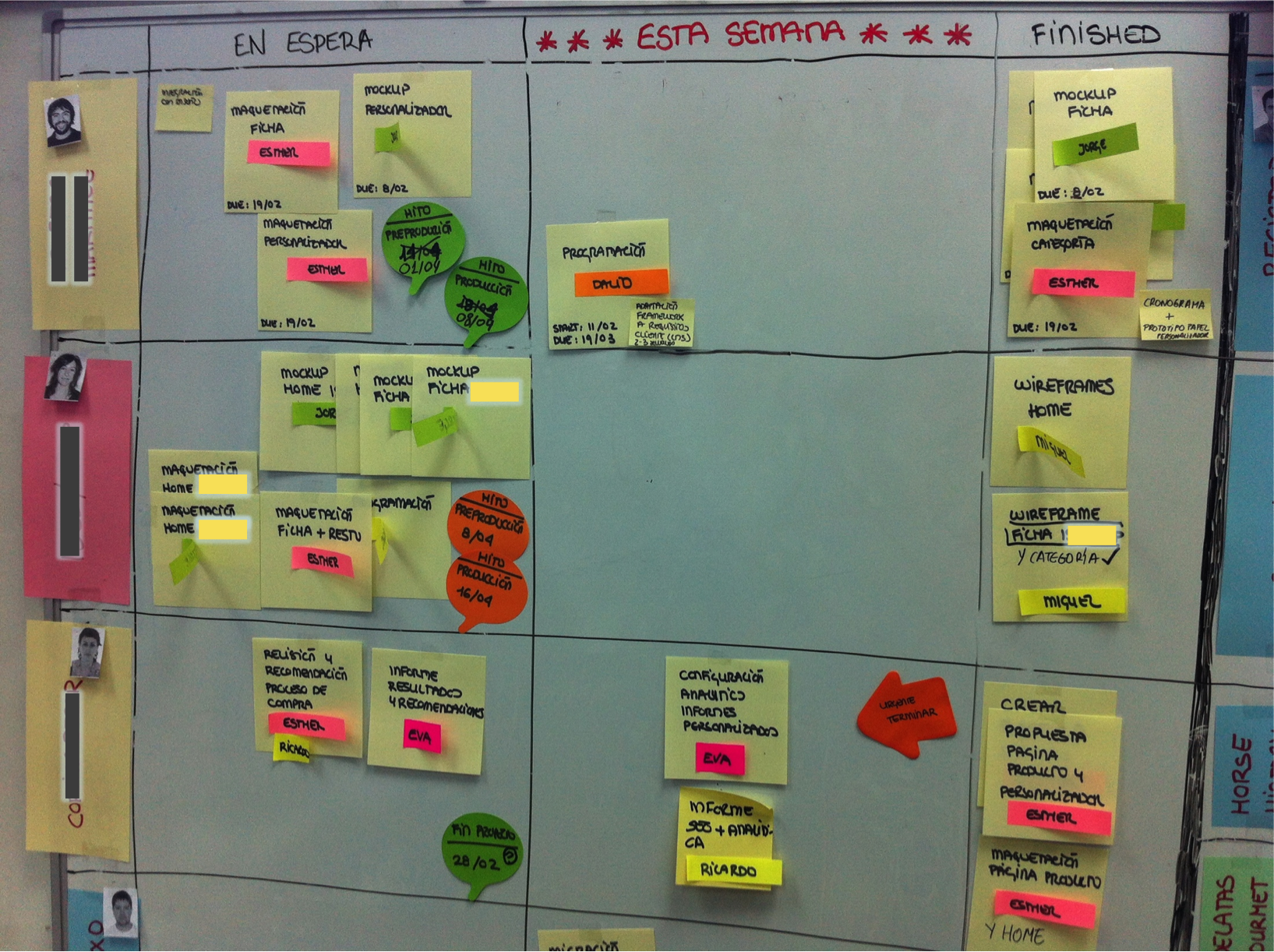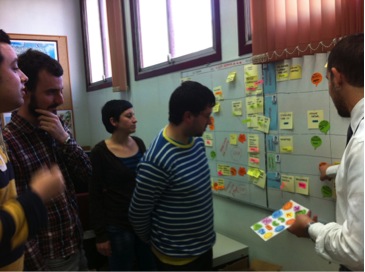The origins of the KANBAN system
The KANBAN system is an agile project management methodology that has its origin in the JIT production processes conceived by Toyota in which they used cards or labels (“kanban” in Japanese) to identify the needs of material in the production chain.
As an agile project managing methodology it is has the pros that it is very easy to use, easy to update, easy to assimilate by the team, very well displayed (almost looks like a game), allows you to see the state of every project at a glance and, what I consider more important, helps to decide what to work in every day/week.
“Stop starting, start finishing”
this is the motto of the kanban methodology

The 5 most important guidelines to start using the methodology
If you are going to work with this methodology, it is important:
- To define your projects work flow, being the most simple “To Do – Doing – Done”
- To visualize the pending work (“To do”), the one in progress (“Doing”) and the finished one (“Done”) at a glance using a Kanban board. Use post-its of different shapes and colors to define tasks, the person that must do the job as well as important milestones and messages for the team (like “Finish urgently”, “Important”, etc.)
- To limit the work in progress. The motto of the kanban methodology is something we must set in stone to optimize our productivity: “Stop starting, start finishing”, stop starting things/tasks/new projects and finish what’s already in progress.
- Measure to optimize you work flow and your productivity.
- Regularly check the work around the kanban board with the team.
In my company we manage our projects using this methodology and we have many Kanban boards set in the office. As we all are in the same room, we have opted to use physical boards so we can interact and play with it in every moment. There are also good tools to work with Kanban if you prefer to do it online.
